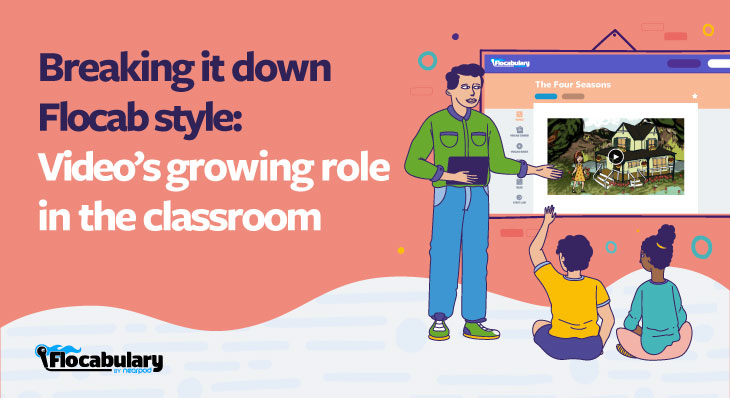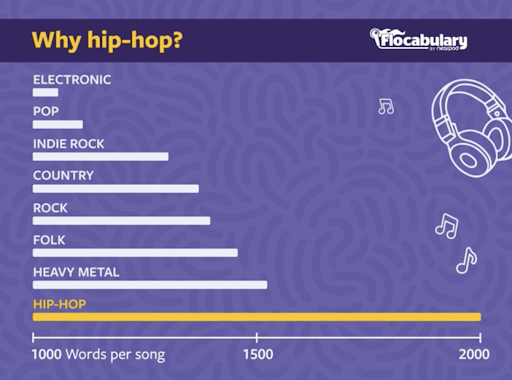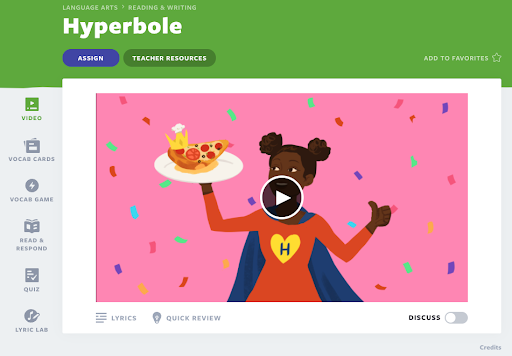
Breaking it down Flocab style: Video’s growing role in the classroom
Over the past two years, video’s role in the classroom has quickly expanded. When schools closed during the COVID-19 pandemic, many teachers turned to classroom video—including Flocabulary!—as a way to keep students engaged while learning remotely. But now, as students and teachers return to in-person learning, videos have remained an essential part of the curriculum.
Teaching with video makes sense for several reasons. For one, students already turn to video as a main source of information and entertainment. Just think of all the music videos, YouTube tutorials, and viral TikToks that populate young people’s social media feeds—and our own! The combination of visuals and audio provides an engaging learning experience, and the short-form content holds students’ attention.
Flocabulary has always believed in video’s role in the classroom—particularly hip-hop videos, which bring in another element of youth culture for even more engagement. Flocabulary videos provide students and teachers with a rich text that combines standards-aligned content with grade-appropriate tier 2 and 3 vocabulary—along with attention-grabbing music, visuals, and subtitles to engage students in multiple learning modalities.

Each Flocabulary video begins with standards alignment: how can we best teach the content students need to learn? Then we work on making that content relevant—and relatable—to students. We believe that hip-hop is education. The abundant wordplay, figurative language, rhyme, and rhythm in hip-hop create multiple opportunities for close reading and text analysis. On average, rap uses two to three times more words per song than other music genres, providing a rich format for teaching complex concepts and emphasizing vocabulary acquisition.

In addition to our roots in hip-hop, Flocabulary takes a “windows and mirrors” approach to our content. We aim to both reflect students’ own experiences and introduce them to new perspectives they might not be familiar with. We do this in small and large ways—from making videos about under- or misrepresented historical figures like Tecumseh, Sacagawea, and Yuri Kochiyama, to creating a diverse cast of characters in our math videos, to setting an SEL video in Ghana. Research shows that students perform better when they feel connected to their learning communities—when their interests and cultural backgrounds are respected.
Take Flocabulary’s “Hyperbole” video, for example. Rapped by a young Black female superhero, this ELA lesson provides multiple opportunities for students to learn about this type of figurative language. The hook, or refrain, describes hyperbole in rhyming verse to increase retention: “Hyperbole, hyperbole, / Exaggerate for effect, certainly, / Build intensity and urgency, / Hyperbole, I know you heard of me.”

From beginning to end, the video gives examples of hyperbole in context, like “The best figure of speech hands-down” and “I’m brighter than an Ivy university.” The lyrics quote literature and pop culture, citing hyperbole in the tall tales of Paul Bunyan as well as a Taylor Swift song. The song also provides examples of hyperbole in everyday speech, including “My bag weighs a ton!” to “If I don’t get to go to the mall tonight, I’m literally going to die.” In essence, the video becomes a text for students to analyze and learn from.
In addition to the content itself, each Flocabulary video provides built-in scaffolds for learners of all levels. Teachers can slow down video playback to give students more time to absorb the information in the video. All lyrics are available as a printable PDF for students to annotate as desired. Plus, teachers can toggle on Discussion Mode, which provides open-ended questions for students to discuss as they engage with the text.
With Flocabulary, every video includes a suite of custom-written, standards-aligned lesson resources that deepen the learning experience. The Quiz acts as a quick assessment or exit ticket that ensures comprehension of the material in the song. The Vocab Game motivates students to master the tier 2 and 3 vocabulary words included on the Vocab Cards. Read & Respond passages and multiple-choice questions provide additional context for the information in the video, plus give students an opportunity to practice reading comprehension skills. Each video comes with a custom printable activity for students to further engage with the content. Finally, Lyric Lab gives students a platform to write and perform their own raps based on what they learned.
Flocabulary has always believed that videos are a powerful teaching tool. Students are already sharing and learning from videos in their daily lives—why not bring that engagement into the classroom? The combination of lyrics and visuals, standards-aligned content, and rigorous vocabulary instruction provides a rich classroom experience that gets students excited about what they’re learning.
